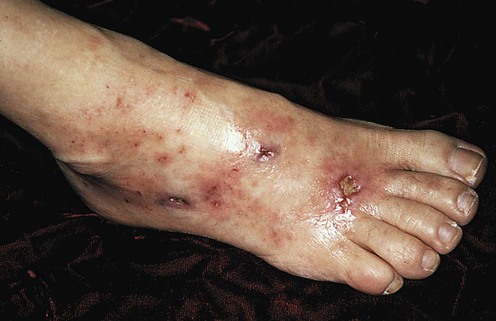Livedoid vasculopathy

(From Lebwohl, M.G., 2003. The Skin and Systemic Disease: A Color Atlas, second ed. Churchill Livingstone, with permission of Elsevier.)
Specific investigations

(From Lebwohl, M.G., 2003. The Skin and Systemic Disease: A Color Atlas, second ed. Churchill Livingstone, with permission of Elsevier.)
